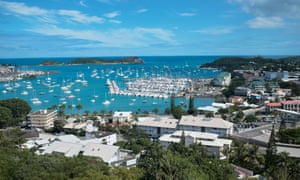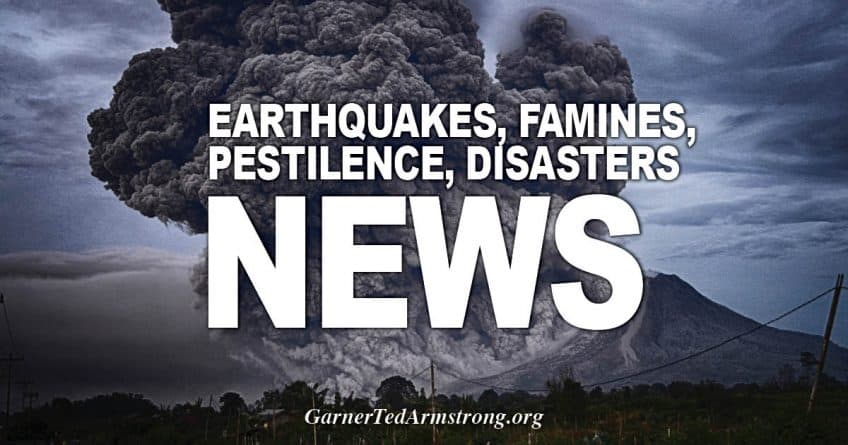Authorities order the ‘immediate evacuation’ of people to refuge areas, saying tsunami waves could reach up to three metres

The quake struck at a shallow 10km deep Photograph: Theo Rouby/AP
A tsunami warning has been issued for the Pacific island of New Caledonia, after a shallow 7.6-magnitude earthquake struck off the country’s coast, prompting warnings that hazardous tsunami waves up to three metres high could reach New Caledonia and Vanuatu.
The earthquake was a shallow 10km (6 miles) deep and occurred about 155km (95 miles) southeast of the Loyalty Islands, which are part of New Caledonia, a French territory, on Wednesday afternoon local time.
“Based on the preliminary earthquake parameters, hazardous tsunami waves are possible for coasts located within 1,000km of the earthquake epicenter,” warned the Pacific Tsunami Warning Center (PTWC), saying waves could reach between one and three metres high.
Earthquakes are generally more destructive when the focus is near the surface, however there were no initial reports of damage or destructive waves.
The New Caledonian high commission initially issued a tsunami warning for all of New Caledonia, ordering the “immediate evacuation” of people to refuge areas and the “application of safety instructions”, with residents being alerted by urgent text message, which instructed them to go to refuges.
“If you don’t have time to prepare your evacuation, get more than 300m away from the coast and/or get to a height of more than 12m,” warned the Directorate for Civil Protection and Risk Management of New Caledonia (DSCGR).
“We activated the alert sirens… along the east coast and all the Loyalty Islands,” Eric Backes, director of the islands’ civil defense authority, told local radio.

“People should move away from the coastline and to higher ground or go to the evacuation points set up in each commune.”
The DSCGR warned people not to use their vehicles, told them to leave their children at school where they would be taken care of by teachers and not to clog the telephone lines.
The DSCGR later downgraded the warning, saying evacuation was not required for the west coast of the country, in particular Noumea, the capital. But they warned residents to “remain vigilant over the entire coastal strip due to possible abnormal sea level movements”.
At 5:45pm local time, they said “sea movements” were expected for three hours until 8:45pm, and that the end of the alert would be announced by sirens.
Basile Citre, a municipal official on the Loyalty Island of Mare, said the situation there was so far under control.
“I was in a meeting at the town hall and we felt a small tremor then a bigger one,” he told AFP.
“The building shook, but there was no damage. When the sirens sounded, the population headed for higher ground for safety. For now, nothing serious has happened.”
The PTWC said initial tsunami waves could arrive between 4:42pm UTC and 5:39pm UTC but warned that the actual arrival time of the wave could differ from this and warned that “a tsunami is a series of waves and the time between waves can be five minutes to one hour” and that the initial wave may not be the largest and most dangerous in the series.
New Zealand authorities issued a tsunami warning after the quake, but that was quickly rescinded.
A spokesman for the Vanuatu Geohazards Observatory said the sparsely populated island of Tanna was expected to be most affected part of the country but no evacuations had been ordered.
“There are no sirens on Tanna but the people on the island are familiar with these situations and they will have taken precautions and gone to higher ground,” he told AFP.
There were no immediate reports of damage from the initial earthquake and according to the US Geological Survey modelling, damage from the quake is expected to be minimal in terms of loss of life.
Waves reaching 0.3m to 1m above tide level could reach some coasts of Fiji, warned the PTWC.
The PTWC said government agencies should inform coastal populations who are at risk, in line with their procedures and told people located in threatened coastal areas to “stay alert for information”.
• This article was amended on 6 December 2018. An earlier version said earthquakes are more destructive when the “epicentre is near the surface”. Epicentres are by definition at the surface; the word intended was “focus”.
[Disclaimer]









